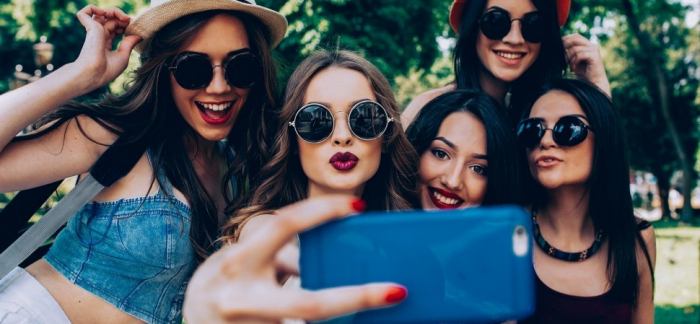Do any of these statements apply to you? Is the obsessive taking of selfies and sharing them on social media indicative of low self-esteem? Is it a way to try to become more intimate with one’s friends and associates?
The word "selfie" describes the act of taking a photo of oneself; often, the photos are then shared on social media. More specifically, it can often be defined as taking a photograph of oneself with a smartphone, usually held at arm’s length in order to photograph as much of a person as possible (or sometimes taken with the camera pointed toward a mirror). Additionally, the photograph may also include other people.
An interesting study by Janarthanan Balakrishnan of the Thiagarajar School of Management in India and Mark Griffiths from Nottingham Trent University in the U.K. sought to develop a scale to measure a person’s motivations for taking selfies and to identify how these motivations differed between people.
They initially employed several focus groups of students from whom they eventually generated 20 statements to be used in their "Selfitis Behaviour Scale." The researchers then administered the scale to 400 respondents in order to determine the possible motivations for taking and posting selfies.
They labelled these as:
- Attention seeking : Taking and posting selfies to feel more popular. Social media is an obvious way to gain attention from a large audience and attention-seeking may be one of the main reasons why people take selfies and use social media.
- Mood modification : This has been described by Griffiths (2005) as an experience that makes someone feel better and is part of what defines addiction. Selfie-taking is another way in which people can enhance their mood, which reinforces selfie-taking behaviour.
- Self-confidence : The taking of selfies may increase the self-confidence of those who engage in this behaviour. Furthermore, it is possible to edit and enhance selfies before posting them on social media, meaning that people may be able to use editing to obtain a photo closer to their "ideal self."
- Social competition : Taking selfies to increase one’s social status, or posting selfies to get social media likes.
- Subjective conformity : This refers to an individual’s tendency to copy what others do. Social media platforms allow users to create different groups and feel a sense of belongingness to a particular group. There is a possibility that selfie-takers adopt certain "online" selfie rules to achieve a degree of social acceptance.
- Environmental enhancement : This is the taking of selfies to create memories or trophies of oneself (e.g. at a concert or after running a marathon). The environmental enhancement also means that people are able to express themselves more freely through the taking of selfies.
In terms of the number of selfies taken, 223 participants reported taking between one and four selfies per day; 141 took between five and eight selfies per day, and 36 took more than eight selfies per day. In terms of the number of postings, 136 participants reported posting no selfies per day; 162 posted between one and three times per day, and 102 posted more than three times per day.
From this, the researchers derived three categories of what they dubbed "selfitis":
- Borderline: Taking a selfie up to three times per day, but not posting them on social media.
- Acute: Taking a selfie at least three times per day and posting each of them on social media.
- Chronic: Possessing the urge to take selfies all day and posting these on social media at least six times in a day.
Different Motivations for Different Groups
The chronic group had higher scores than each of the other two groups for attention-seeking, social competition, and environmental enhancement, which means that these factors were what motivated the chronic group to take and post selfies.
The group labelled as borderline (taking selfies often but not necessarily posting them) had higher scores for self-confidence and mood modification. Therefore, what motivated this group to take selfies was feeling positive about themselves for taking a selfie and doing so to enhance their mood.
For the acute group (three selfies per day and posting on social media) subjective conformity was the main motivator. Scores on subjective conformity were very low, however, in the borderline group.
Is It Really "Selfitis"?
Selfitis, as defined in this study, is a new construct which requires further validation in terms of its relationship to other factors of addiction and compulsion. We might initially have considered the taking of selfies as a slightly dysfunctional or strange activity—perhaps, at worst, indicative of narcissistic behavioural traits.
However, the prevalence of selfie-taking would also now seem to render it a normal recreational pastime and part of our way of using social media, with people editing and refining photos before posting to various platforms. It's important to ask, then: Is it dysfunctional and strange—or just normal behaviour in the modern age?
Psychology today
More about: selfie
















































